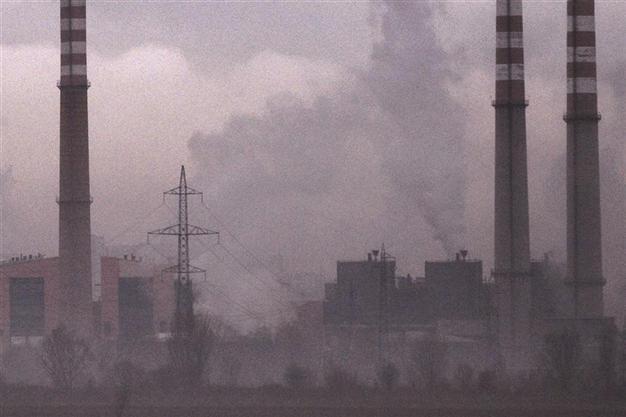Air pollution ‘dangerously’ high across Europe
PARIS - Reuters

In the last decade, tighter European regulations on power stations and other sources of pollution have seen a 50 percent cut in emissions of sulphur dioxide, which causes acid rain, while carbon monoxide emissions have fallen by a third. AFP photo
Air pollution is dangerously high across many parts of Europe, resulting in premature deaths, ill health and huge economic losses linked to reduced crop yields, Europe’s environmental watchdog said yesterday.
While emissions of some pollutants have declined sharply in Europe in recent decades, more diesel cars and a rise in wood burning by households as a cheap alternative to gas mean other types of harmful pollution are receding more slowly.
European regulators are expected to propose a tightening of EU limits on microscopic particles known as particulate matter (PM) and other pollutants, with legislative proposals due before the end of the year.
A total of 22 European countries including France, Italy and Poland exceeded the daily EU limit value for PM in 2011, while stricter, non-binding guideline limits set by the World Health Organization (WHO) were exceeded at most monitoring stations across continental Europe, according to a report by the European Environment Agency (EEA). In the last decade, tighter European regulations on power stations and other sources of pollution have seen a 50 percent cut in emissions of sulphur dioxide, which causes acid rain, while carbon monoxide emissions have fallen by a third.
By contrast, the amount of harmful particles and ozone in the air has fallen only slightly. Combined with recent WHO findings that lower concentrations of air pollution can be more harmful than previously thought, pressure is building on the European Union to do more.
“Air pollution is causing damage to human health and ecosystems. Large parts of the population do not live in a healthy environment, according to current standards,” said Hans Bruyninckx, Executive Director of the Copenhagen-based EEA.
The tighter proposed limits on PM could pose problems for EU governments, many of which have struggled to meet the existing limits in force since 2010, resulting in up to a third of Europeans being exposed to dangerous levels of PM pollution.
PM pollution biggest riskIn its report, the EEA said PM pollution, particularly in urban areas, posed the greatest risk to human health thanks to its ability to pass directly from the lungs into the bloodstream.
Despite struggling to meet the limits, cities in Europe - along with the Americas - enjoy relatively low average PM pollution levels compared with those in southeast Asia, the Middle East and Africa, WHO data showed.
Ground-level ozone pollution - formed indirectly by a combination of sunlight and mixtures of other pollutants in the atmosphere - inflicts huge damage on EU crop production, particularly in Mediterranean countries such as Italy, France and Spain.
It has been estimated that ozone pollution resulted in production losses of 27 million tons of grain in Europe in 2000.
The increasing number of diesel vehicles on Europe’s roads, particularly newer models, are a major source of nitrogen dioxide, one of the main precursor pollutants that form ozone, the report says. That is because while modern diesel exhaust after-treatment systems reduce fine particle and other emissions, they increase direct nitrogen dioxide emissions.
Researchers said earlier this month that nitrogen dioxide emissions from diesel exhausts can disrupt honeybees’ ability to recognize the smell of flowers, which could affect pollination and further undermine food production.
